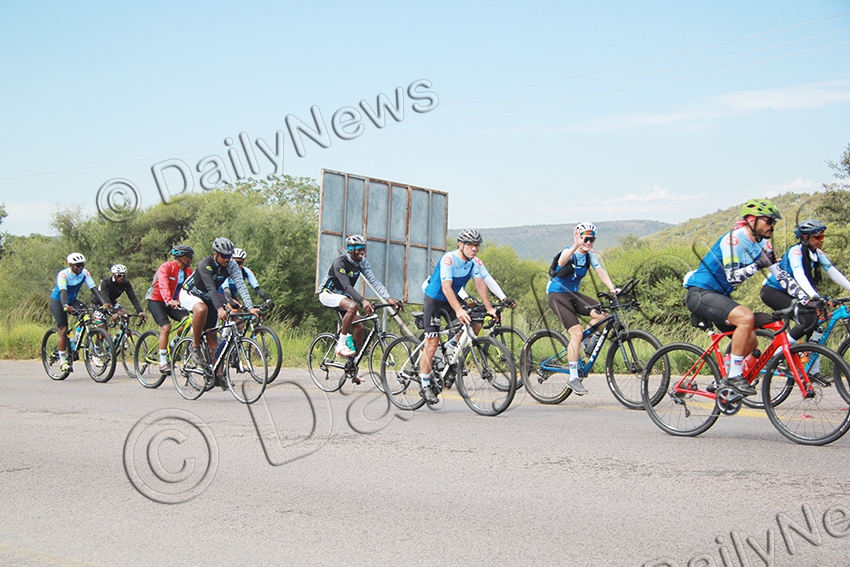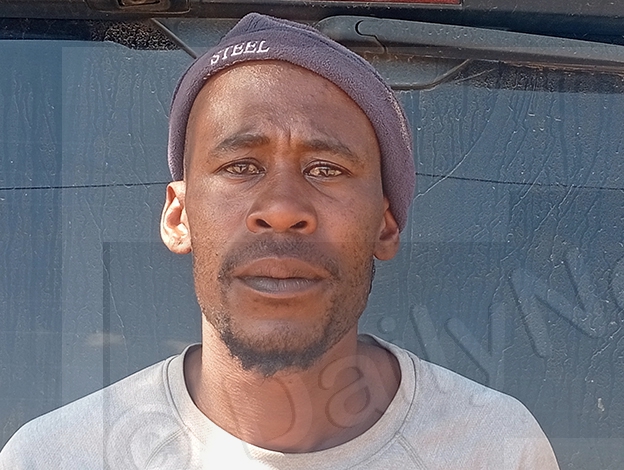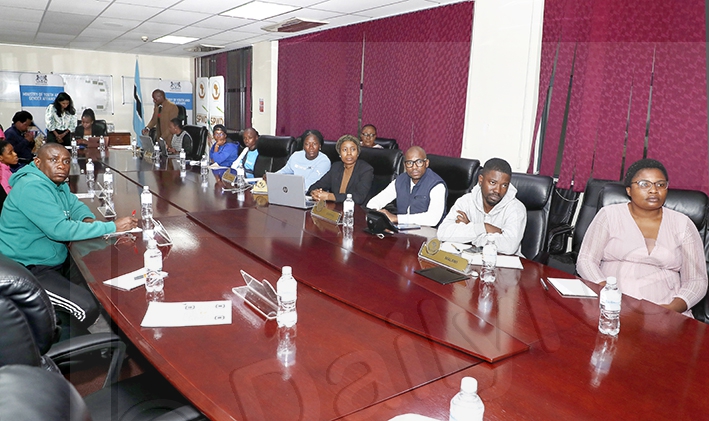Journalist Reflects on Trans Kalahari Corridor cycle tour
09 May 2024
Cycling is one activity that requires determination, concentration, and endurance.
However, cycling from Rustenberg in South Africa to Walvis Bay in Namibia via Lobatse, Kanye and Ghanzi in Botswana, a distance of about 1 800km, is no small feat.
And that is exactly what 30 cyclists from the three member states of the Trans-Kalahari Corridor (TKC) recently achieved. The cycle tour was also an adventure and a tick on the box of things to do before retirement for some of the cyclists.
The TKC secretariat, which comprises of Botswana, South Africa and Namibia organised the cycle tour across the three countries in an effort to promote the corridor and highlight the value that it could offer.
The idea was to also promote safety and security along the road.
The corridor stretches from South Africa to the port city of Walvis Bay in Namibia via Kgalagadi District in Botswana.
Cyclists from the three countries endured a two weeks test traversing the corridor and tackling challenges encountered. Some had never travelled on the corridor and were excited by the journey and what lied ahead.
The journey started from Rustenburg in South Africa mid-April and a typical day started soon after sunrise. The riders and their support team, which included the media, medical, law enforcement and drivers, would have breakfast for 30 to 45 minutes before the cyclists hit the road.
The organisers of the two-week cycle tour had arranged accommodation along the corridor either with hotels and lodges along the way or camping in the absence of lodging facilities.
There were three camping nights in both Botswana and Namibia, and on hotel days meals included buffets and a variety of favourites.
The organising crew worked with hotels to ensure that they provided as much protein as possible to fuel the cyclists for the day ahead.
On camping days, pretty much the same was offered with more breads and spreads and any goods that they were able to source locally.
Camping was the least favourite experience for most riders as everyone had to contend with cold nights and the discomfort of mattresses, but it also demonstrated that citizens of the three countries shared a common culture.
However, everyone took the adventure in a humorous manner and had to do with what was provided.
April is perhaps one of the best periods to undertake a cycle tour along the corridor because it is cooler than the preceding rainy season months of November to March, but the scorching sun of the desert still lead some to experience heat rashes, allergic reactions and to catch flu.
On average it was four hours on the saddle for the riders which translated into about 150 km per day. However, on two occasions, one in Botswana and one in Namibia, the cyclists embarked on a 170km ride.
At the end of each day, cyclists and supporting crews were offered massages, but most preferred to socialise over drinks while recapping on their journey around a bonfire or the poolside if at hotels.
In our Trans Kalahari Corridor cycle tour, Daniel Mophuting and Miguel Teixeira from Botswana and South Africa respectively were the sweepers, riding behind everyone throughout the journey to energise and encourage slow cyclists.
Along the corridor, cyclists met happy communities who encouraged them to endure the race, and they for their part spread the message of road safety and security while taking snapshots.
“It was an amazing experience to meet new people, cycle with people of different fitness levels, skills levels and personalities,” said Ditirafalo Mosinyi.
He said they took each day with its challenge and strived to finish the day’s assignment.
Cycling the corridor, to the organisers and secretariat, illustrated its safety and security as well as sharing it harmoniously. And cyclists, motorists and truckers were in harmony during the tour and gave cyclists space to manoeuvre. ENDS
Source : BOPA
Author : Ketshepile More
Location : SWAKOPMUND
Event : Cucle Tour
Date : 09 May 2024








